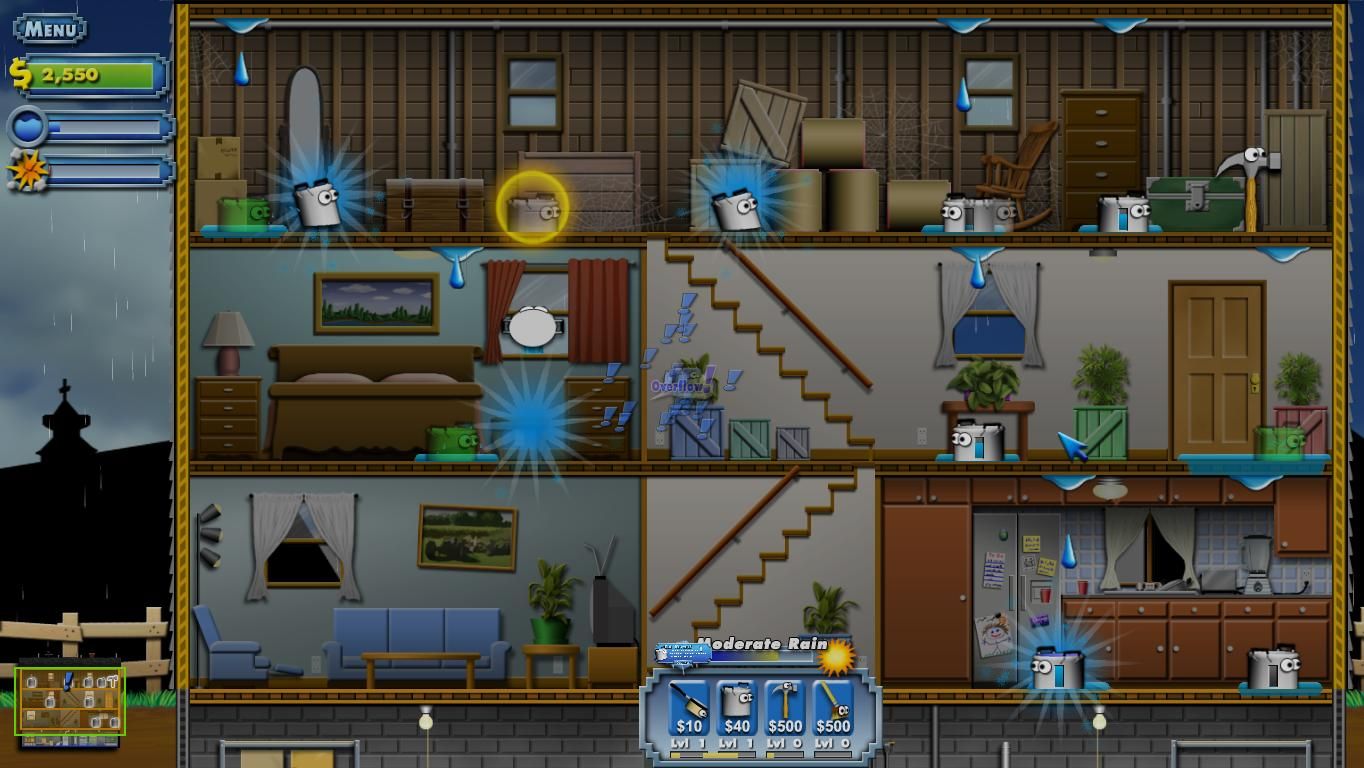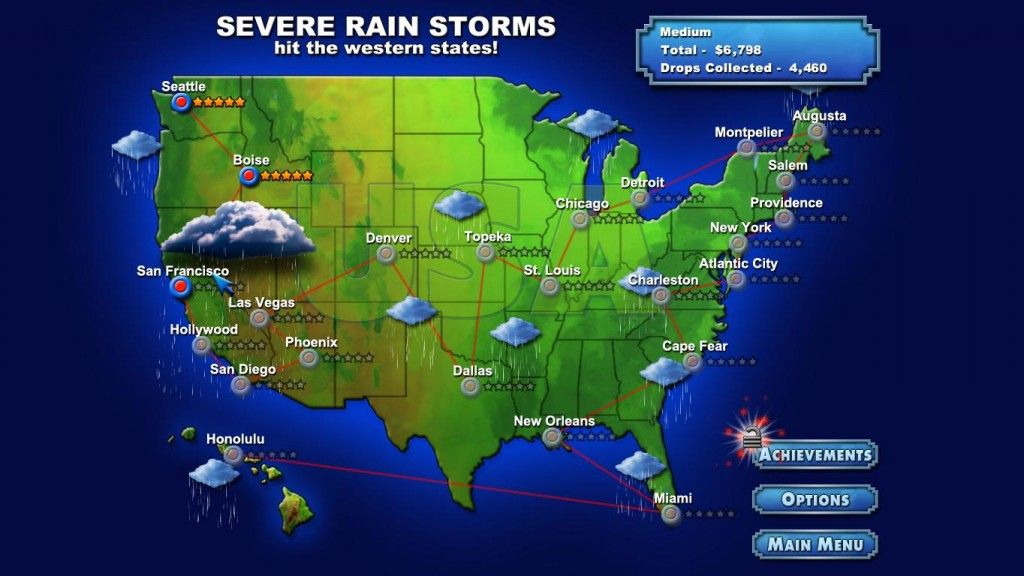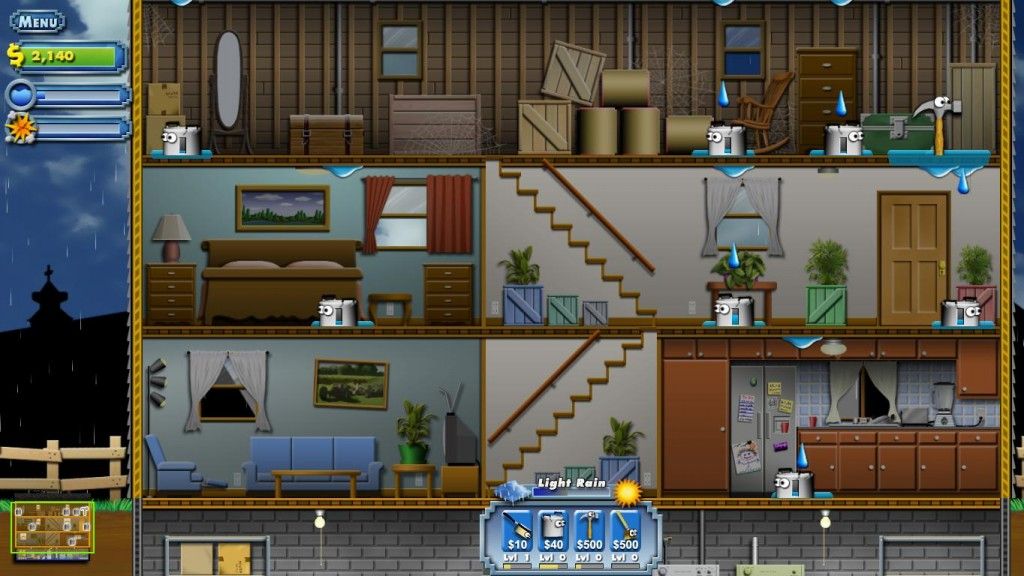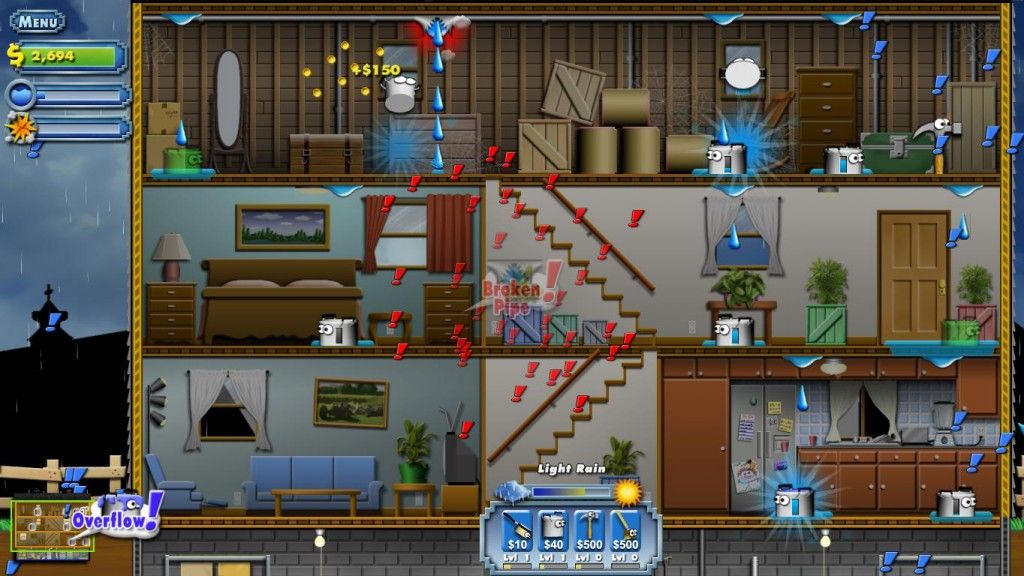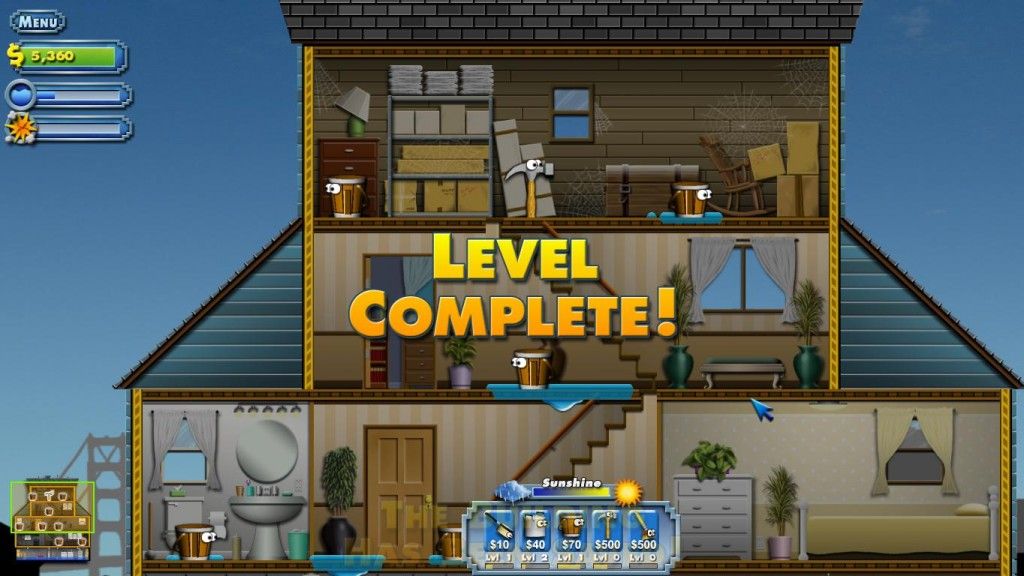When I first heard what indie game Drip Drip involves, I thought it was a unique – if odd – premise. I also wondered how it would work. Luckily, the game wastes no time getting you accustomed to the one simple goal you have throughout its entirety – stop the drips. However, that seemingly simple premise is anything but, once you get into the meat and potatoes of the game.
To start things off, the game offers a great tutorial that covers all the basics. Like the game itself, I recommend going through it first. While this is similar to other resource management games out there, it still has its own unique mechanics that can seem overwhelming if you aren't at least aware of what they are and when they’re coming. Even at that, though, Drip Drip overwhelms you with frenzied, fast-paced action once the game proper gets rolling.
The idea is to use containers of various sizes to stop drips in buildings from getting so bad during storms that the basement fills up with water and the building itself collapses. The game has plenty of stages spread out across the country, starting in the Northwest, working to the Southwest, then across Midwest and down the Eastern coast. As you move along, things graduate from deceptively simple to pull-your-hair-out difficult, even on the easier game difficulties.
You begin with nothing but a small kitchen pot to collect water. You start each stage with a set amount of cash, as well. Each item you bring out to help you in your quest to save the building costs money. When you bring out a pot, you direct it under the desired drip and it begins to fill with water. Once the container is full, you have to direct it to a window to dispose of the collected liquid. Disposing of the water generates money.
Two things happen to your containers. First, they level up the more you use a specific one. This improves both their speed and their carrying capacity (regardless of the actual physical size). Secondly, you get a wider variety of containers as you progress through the stages of the game. First you get a pot, then a bucket, then a barrel, then a garbage can. You also eventually get different types of “containers”, such as a sponge, which doesn't collect water, per se, but instead soaks up large pools of water on the ground so the floors don’t collapse. They are emptied the same way as regular containers (but move much slower).
In addition to collecting and disposing of the water, you have to deal with various other issues that crop up due to the rain and storms going on outside the house. Things like broken pipes, lightning strikes and areas of the floor collapsing are just a few. Special tools are used to repair these issues, and until they are, they each have their own detriment to your continued efforts. For example, if a pipe breaks, it literally pours water onto the floor. If you catch it with a container, the container fills up very quickly. If you don’t, the floor gets very wet and runs the danger of collapsing. Therefore, fixing the pipe as soon as possible is a must. Certain other deterrents that pop up require you to move your containers or risk losing them.
There is a money management deal going on here, as well. You have to balance incoming and outgoing money with the size of containers you really need to use. If it’s a slow drip, maybe spending a ton of cash for a barrel isn't the right way to go, but, instead, dropping a cheaper bucket there might be ideal. As I experimented, I found using nothing but expensive containers lowers your profit margin to negligible amounts. While money isn't that big of deal outside of each stage, in later levels during the stages you can run yourself dry if you don’t manage your funds and equipment properly.
As the stages progress, you get more tools, but you also have to deal with larger buildings. What that equates to is more and more to keep track of, and sometimes things get way out of hand. If you let things go just a little, before you know it you have a big problem on your hands with multiple collapses and missing containers everywhere. It’s a lot to keep up with.
Generally speaking, the game is easy to control with your mouse. There is a mini-map in the lower left of the entire building, and you can jump from section to section by clicking on it. That map also shows you where problem areas are, even before they happen, so, if you react quickly enough, you can mitigate the damage they will cause.
So, basically you continue on this route of spending money to generate containers and tools to help you save this structure, in turn, you generate income by disposing of water. There’s a little bar that tells you how long the storm will last and the intensity of the rain outside. You will get everything from light rain to typhoon conditions, with the resulting deluge of water that you would see from them.
By saving each structure, you move on to the next one down the line, each getting progressively larger and more complex, as well as seeing more desperate conditions outside which you must work to overcome in the building.
The visuals are nice and fun. They’re colorful and catch your eye, but nothing spectacular. They do, however, work for the game. Sometimes the sprites for things such as the hammer and broom – two of your most important tools – get lost in the background and they’re hard to see, but this varies depending on where you leave them. This comes into play in actually finding them to use them again, instead of dropping another $500 to bring out another one.
The mini-map is great in the lower left, but moving to different areas in the building is easier said than done. In the later stages of the game, any time wasted moving your mouse to the mini-map to click on a trouble spot, or scrolling up and down the building by the edges of the screen or with the mouse wheel could leave you drowning. It would have been nice if you could zoom out the entire building itself and then zoom in at the mouse pointer to make getting to different areas of the structure more organic. Although, I doubt there’s anything that could be done that wouldn't waste at least a few precious seconds.
To that end, I feel with the easy and regular modes, that things progress in difficulty too quickly. While I didn't play on the more punishing difficulty levels, the first two were bad enough, and I felt that, due to the way the UI and game mechanics work, you just weren't given enough time to react to what you needed to without giving yourself gray hairs or repeating a stage multiple times.
The game also comes packed with many achievements to aim for throughout the course of the game, from the easy to the challenging, so this should certainly enlist some replay value. Although, having played through the game twice on two different difficulties, I have certainly seen enough structurally deficient buildings for one game and, even though I know there are achievements left to obtain, it will be a chore getting them.
Overall, Drip Drip is a great diversion if you don’t get too frustrated with the sudden and rampaging difficulty, even on the lower difficulty levels. It’s a well-made, unique and visually pleasing resource management/strategy title that will provide a nice experience to those who wish to take on the role of water collector.

